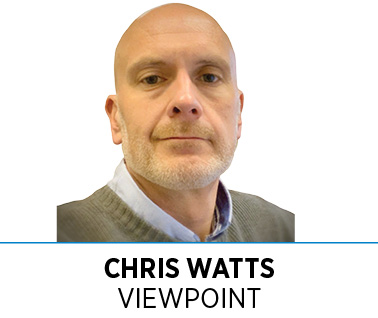Subscriber Benefit
As a subscriber you can listen to articles at work, in the car, or while you work out. Subscribe Now IBJ’s recent examination of the potential property tax impacts of Indiana University Health’s plans for a new downtown hospital complex was a balanced and detailed analysis, but you would need a whole series of stories to cover all the local budget stressors: property tax caps, maximum levies, the volatility of income taxes, service costs and the basic structure of government itself.
IBJ’s recent examination of the potential property tax impacts of Indiana University Health’s plans for a new downtown hospital complex was a balanced and detailed analysis, but you would need a whole series of stories to cover all the local budget stressors: property tax caps, maximum levies, the volatility of income taxes, service costs and the basic structure of government itself.
Not-for-profits like IU Health taking land out of the property tax base and governments’ attempts to restore some of that revenue by charging not-for-profits a payment in lieu of taxes, or PILOT, is just one piece of a complex puzzle.
All cities deal with the effects of tax-exempt properties and balancing the need for revenue with the practical need for hospitals, churches and not-for-profits to locate near the people they serve. They offer a physical footprint for the public good.
But Indiana’s property tax caps raise the stakes. Increasing property tax rates to make up revenue can simply push more properties to their caps. Because of this, Indiana’s urban counties are already prone to cycles of rate hikes, cap losses and growing financial distress.
IU Health isn’t responsible for these constitutional protections against runaway property taxes or the related structural challenges of local government: The land that will be occupied by the new hospital complex is overlapped by a dozen separate taxing units that divide up revenue.
This issue of too much “competition” for limited property tax revenue was addressed by the 2007 commission on local government reform co-chaired by former Gov. Joe Kernan and former Indiana Chief Justice Randall Shepard. But most of the Kernan-Shepard recommendations for consolidation, cooperation and efficiency remain on the shelf.
Another major property tax constraint is also at work: The state-imposed maximum levy limits the total property taxes a county can collect in a given year, regardless of growth in the assessed value of properties within the county. In a sense, the maximum levy can prevent local governments from fully capitalizing on a strong real estate market and economic development projects, like IU Health’s, that raise property values.
National data suggests that hospital expansions have a positive impact on nearby commercial and residential properties. IU Health has discussed plans to invest in surrounding neighborhoods and encourage private health and life sciences development in an “enterprise zone” around the new hospital.
IU Health also participates in a local anchor institution initiative led by the Indy Chamber to encourage not-for-profit employers to do more business with local suppliers and to encourage their employees to buy homes closer to work.
The COVID recession will likely result in a tighter maximum levy, challenging the city’s ability to generate property tax revenue from the positive ripple effects of developments like the hospital and the 16 Tech Innovation District just northwest of downtown. That’s a much larger long-term issue than a few parcels of tax-exempt land.
The IU Health expansion will certainly generate earnings in the construction and service sectors (good for local income taxes), and a modern hospital will support public health and downtown quality of life. The costs and benefits will be debated as the city considers PILOT relief.
But the property tax implications are part of a bigger conversation about how local government raises revenue and delivers services, a conversation that’s more urgent than ever as COVID increases the budget pressure that’s already been building in cities across Indiana.•
__________
Watts is president of the Indiana Fiscal Policy Institute.
Please enable JavaScript to view this content.
